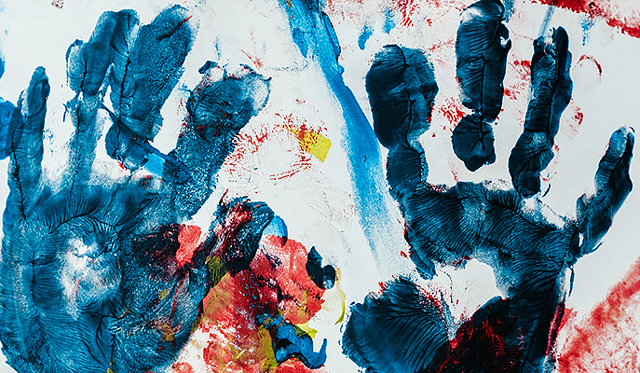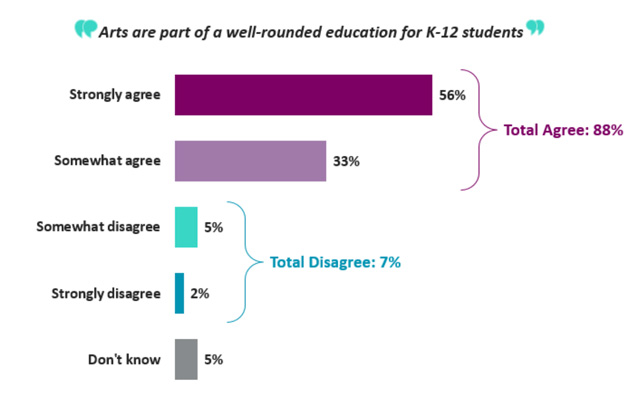OpEd: Power of the Arts in Schools

(Bernard Hermant)
By Brittany Skyler Aubain
Reading, writing, arithmetic, and vocal lessons? One of these is not like the others. Today’s students may not understand the joy of taking a dance or theater class in school as they are no longer always offered due to a long history of budget cuts and a focus on test scores.
What was once provided as a part of the curriculum has been cut to boost test scores and decrease any distractions. Many schools have the motto of “what gets measured gets done,” meaning that arts are not valued as they can’t be quantified through standardized testing.
The New York City Department of Education says in its Annual Arts in School Report, “All public school students should have access to high-quality arts education. Arts education refers to dance, moving image, music, theater, and visual arts.”
The keyword here is “should.” All schools should have these resources. However, many schools can’t afford to make arts education a part of every student’s schedule. In 2014 Mayor Bill de Blasio allocated an extra $23 million towards arts education programs in NYC. Unfortunately, in 2020 the budget was slashed by 70%, and in 2021, the funding was cut by another 11%, bringing the total down to $15 million.
In 2021, New York City public schools received $ 6.9 billion federal stimulus dollars. Unfortunately, according to Mayor Bill de Blasio’s executive budget, not one of those dollars went towards the arts education curriculum.
Afters school program organizations like Good Shepard and Aspira provide activities like sports, visual arts, and music. Still, most of the time, the activities are taught by college students who are not art professionals. What’s more, these programs are on thin ice every year because the moment a school’s budget shrinks, the program is toast, and the ones who suffer the most are the students. Research has shown that an arts education curriculum is vital to shaping a student’s character and even aids in increasing scores.

Survey of 3,020 respondents asked the following: “Do you agree or disagree that the arts are part of a well-rounded education for K-12 students?” — Americans for the Arts
Based on a study done by the Arts Education Partnership, students who study music “Have increased achievement and proficiency in math. Reading and cognitive development were found to increase, as were verbal SAT scores.” Additionally the study says, “Visual arts have a positive impact on students’ ability to organize their writing. Sophisticated reading skills are promoted as well, including the ability to interpret complex texts, such as those found in science courses.”
Matt Gonzalez is a public school teacher in New York City. “You know, it’s like that Einstein quote,” says Gonzalez, “‘If you judge a fish by its ability to climb a tree, it will live its whole life believing that it is stupid.’ If you force different students from different backgrounds with different skills and passions to conform to the same standards, you’re insane.”
Fortunately, with the help and generosity of donors, some programs like Broadway for Arts Education (BAE) can fill in the gap with arts education taught by true professionals like Broadway performers. BAE makes it its mission to provide this curriculum to students in underserved communities in NYC, Haiti, and India. The outcomes of this program — such as social, emotional, and academic improvement — show just how important it is to introduce students to the arts.
An arts education also improves students’ behavior. Students in schools with arts education experienced a myriad of benefits, according to a Brookings Institute study, Investigating Causal Effects of Arts Education Experiences: Experimental Evidence from Houston’s Arts Access Initiative.
We find that a substantial increase in arts educational experiences has remarkable impacts on students’ academic, social and emotional outcomes. Relative to students assigned to the control group, treatment school students experienced a 3.6 percentage point reduction in disciplinary infractions, an improvement of 13 percent of a standard deviation in standardized writing scores, and an increase of 8 percent of a standard deviation in their compassion for others. In terms of our measure of compassion for others, students who received more arts education experiences are more interested in how other people feel and more likely to want to help people who are treated badly.
Students tend to act out when they want to be heard and express themself. Sadly, students who are not great at math or science may not be heard or get the praise they want from their teachers, so they find other methods of getting attention. When students are given positive outlets, like the arts, they are less likely to act out because they have somewhere to channel their energy.
Another benefit of arts education is that it increases student punctuality, according to BAE, which found that its students show up on time and are engaged for the entirety of the lesson. The students and teaching artists build bonds outside of class time, and these teachers encourage their students to continue this positive behavior during their regular school schedules.
Shifting to arts education has also given students the confidence needed for school and social settings. “Since starting theater classes, my son has found the confidence to take the subway by himself for the first time in his life,” said one parent of a 9th grader.
“[This class] has helped a lot with my confidence since I struggle with anxiety,” said another student. “I have a hard time in new situations and sharing with new people.”
More importantly, the Brookings study noted that there was an “increase of 8 percent of a standard deviation in their compassion for others.” Students receive the same lesson working in a group for arts as working in a humanities or STEM course. “We learn a lot about leadership and collaboration,” said one high school student. “We had a group project, so we used Google Docs and delegated tasks and developed a timeline [to complete our work].”
Students learn lessons that go beyond the state test and report cards. The data is evident, and arts education is beneficial. The next time you go to a school board meeting, inquire about their arts education curriculum and stand up for the next generation of artists, actors, and dancers.
Saved under Culture, Featured Slide

